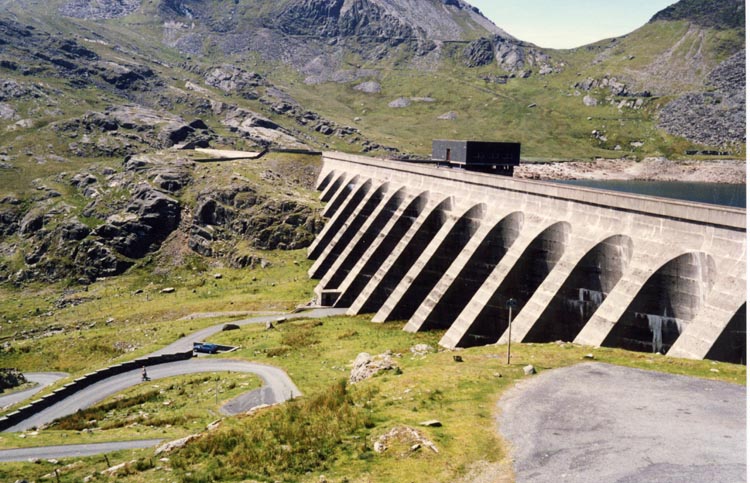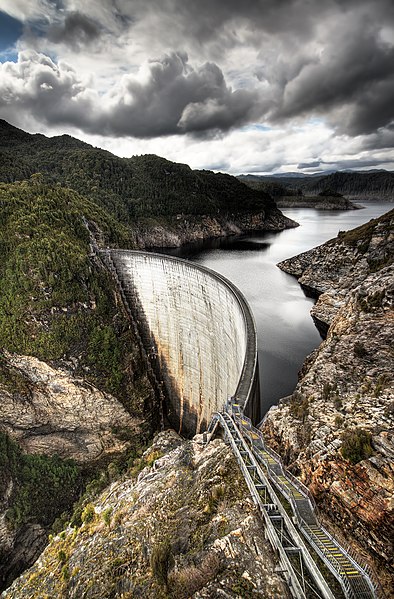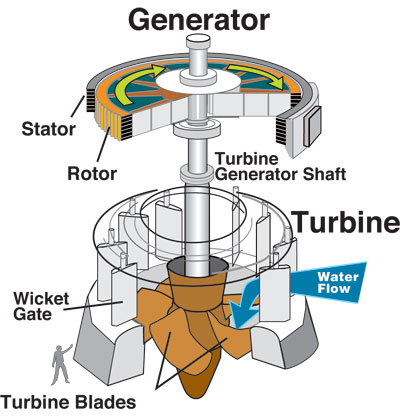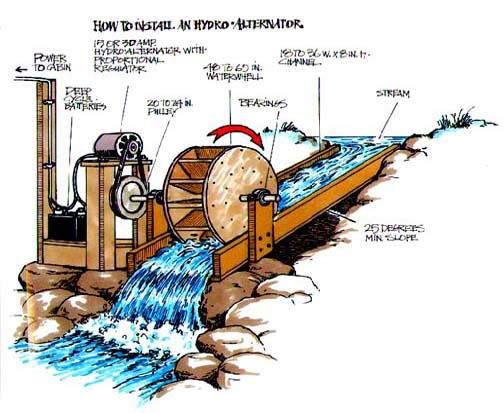FAST-DEPLETING fossil fuels and rising greenhouse emissions have led to a race among nations to drive the agenda of renewable energy (RE).
In Malaysia, while the pursuit of renewable resources may pale in comparison to other major countries, there have been a few strides towards this end.
Just over the week, the country's largest renewable energy park by Cypark Resources Bhd was launched while a milestone is expected to be marked with the Renewable Energy Act expected to be passed soon. Public participation has also increased, especially following the near-nuclear disaster in Japan which has prompted the masses to urge the Government to relook its plans to introduce nuclear energy in Malaysia.
Energy, Green Technology and Water Ministry's RE/Malaysia Building Integrated Photovoltaic Technology Application (MBIPV) national project team leader and chief technical adviser Ahmad Hadri Haris says the RE prospects are bright as Malaysia has resources it can readily tap, such as solar, biogass, biomass and hydro.
“However, renewable energy needs intervention to grow. It will get a push from the Renewable Energy Act. With the Act, interested parties can develop renewable energy in a safe and secured manner as the generation can be sold to Tenaga Nasional Bhd (TNB) over a guaranteed period,” says Ahmad Hadri.
Essentially, the RE Act will enable individuals/investors to earn income by selling electricity generated from renewable resources at home to utility companies.
“We expect the second and third reading this month ... the Act will be enforced probably in May or June, so the feed-in-tariff (FiT) will also come on board then,” says an industry player.
Promoting renewables
Concurrently, the Sustainable Energy Development Authority (Seda) Bill, which is to institute the establishment of Seda Malaysia will also be tabled. Seda will be responsible to spearhead renewable energy development as well as to manage the FiT programme. A fund will also be established and administered by Seda. A 1% tariff hike could come about to cover cost associated with the FiT scheme when it comes into force.
Ahmad says it would be a very minimal impact given that 1% of a RM100 electricity bill would cost RM1. He says some 56% of the nation would not be impacted as they consume less than 200kwh a month.
Under the FiT, up to 30MW of electricity generated from four renewable sources, solar photovoltaic, biogas, biomass, and small hydro, are eligible to apply to connect its power generator to the national grid, and sell the power back to utility companies such as TNB, Syarikat Sesco Bhd and Sabah Electricity Sdn Bhd.
What it means is that if you have a solar photovoltaic (PV) generator at home, you can apply to connect this generator to the grid, and get paid for selling the electricity to TNB over an agreed timeframe.

Ambitious targets
Malaysia plans to achieve 985MW or 5.5% share of renewable energy in the energy mix by 2015. Currently, renewable energy contributes less than 1% to the energy mix in Malaysia. By 2020, the target is for renewable energy to comprise 11% or 2,080MW of overall electricity generation in the country.
Currently, the country's energy demand is largely met by fossil fuels. OSK Research head Chris Eng says the passing of Renewable Energy Act would be “crucial” to achieve the Government's target: “I think key to driving the adoption of renewable energy at the end of the day would be the act.”
He says the target of 985MW by 2015 and 2GW energy to be sourced from renewable energy remains tough as currently the electricity generated from green energy is limited.
According to the Energy Commission chairman Tan Sri Ahmad Tajuddin Ali, renewable energy will be moved out from its portfolio to be managed under Seda once the Act is passed.
He says currently the country is producing some 500MW electricity from renewable energy but only 50MW is connected to the grid as other are used in-house such as the plantations sector.
Tajuddin says the FiT has to be ready in order to lower the hurdle in investing in renewable energy project or many project will not kick off as it is not viable economically.
MBIPV's Ahmad believes the target of achieving 11% of overall electricity generated by renewable energy by 2020 is achievable.
“Yes, because the target is very modest in comparison to what has been achieved in other countries (closest to us is Thailand).
International FiT expert and independent energy policy consultant and researcher at the Environmental Policy Research Centre of Freie Universitat, Berlin, David Jacobs believes the short-term target of 5.5% is definitely achieveable. He says, however, Malaysia should have a more ambitious long-term target.
“With Malaysia targeting to achieve 25% of total usage of renewable energy by 2050, other countries would be in the 60%-70% range by then.”
Hurdles aplenty
Among the challenges faced in this drive towards renewable energy is the lack of understanding as well as the current distortion that exists in power generation cost given the subsidy elements. In addition, others contend that while Malaysia may appear to be a solar-rich country, effective sunlight is low, curtailed by the fact that its skies are cloudy. As for wind turbines, others contend that the wind speed in the country is not strong enough.
Cypark director K.K. Siow does not agree with critics who say that cloud covers make it less attractive to invest in solar energy. He says the radiance is strong enough, explaining that 10MW produced in Pajam could supply power to some 40,000 to 50,000 people in the area.
Ahmad is confident these challenges can be overcome: “There are solutions for any problem. We just need to adopt the correct one for Malaysia ... a technology in Europe may not be suitable in Malaysia.
“For example, the thin-film solar technology is less accepted in Europe, but is proven to be better in Malaysia's cloudy climate. In Malaysia, we can generate 1.3 times more solar power output than Germany (the current No. 1 country in the solar market),” he says, adding that the same applies to wind. “Thus we just need to find the right technology for Malaysian climate.”
Whither electricity prices?
On the impact of the RE Act to end users, most observers contend it would likely be minimal and not as significant as say, if gas subsidy were to be removed or if coal prices continue to climb.
“The impact from Act is only 1% at the next tariff review. In any case, for this year, the Government has already allocated a fund to start the Act. In the mid to long term, as the country uses more than 50% of renewable energy in the mix, Malaysia can better control its energy imports and would be less affected to price volatility. Thus, we can become more energy independent,” Ahmad Hadri says.
One of the notable developments in the industry is the opening of a 26ha renewable energy park in Pajam, Nilai by the Prime Minister Datuk Seri Mohd Najib Razak. Cypark invested RM94.29mil to build the park with national grid connection on a remediated landfill.
Comprising a 2MW biogas plant and a 8MW solar power facility, the RE Park is expected to generate RM12.16mil in gross national income in 2020.
The RE Park involves the integration of three potential resources available at the landfills such as solar, landfill gas and waste into a scalable renewable energy project generating up to 10MW of power in the Pajam landfill.
Cypark group chief executive officer Daud Ahmad says Pajam landfill is one of the 17 landfills that the Government has mandated to close down. Cypark will replicate ways of unlocking the economic value of the land for the remaining 16 landfill sites and it has also proposed to do the same for another 32 landfills.
“With the additional 32 landfills and the existing 17 landfills, producing 100MW is not an issue,” he says.
In Cypark case, it uses land (landfills) of no economic value which could not be use for any activity for the next 20 to 30 years. It is basically transforming a tract of land of negative value. “It is a 100% beneficial from an economic point of view to convert negative-value land to a fully-utilised land to produce electricity,” Daud says.
OSK's Eng says the current projects are “not particularly lucrative” given the 21 sen per kWh tarriff for all renewable energy projects but this could change.
“While the final tariff rates may still change, based on information published on May 5, 2010, the FiT for solar power generators ranges from RM1.25 to RM1.75 per kWh while that for biogas is from 28 sen-35 sen per kWh.
“This would make it much more lucrative to run a solar power and biomass or biogas power plant. Indeed, TNB has announced its own RE plants including a joint venture with Felda Global for a RM120mil fresh fruits bunches biomass plant and feasibility studies for its RM60mil solar power plant,” Eng says.
By The Star Online.









































